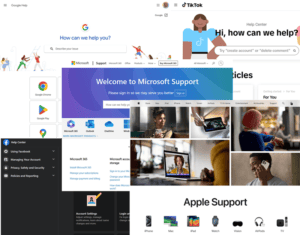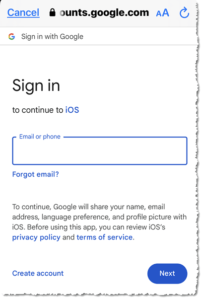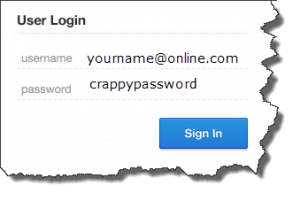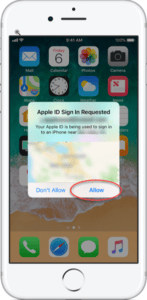Tech Support Silo

Tech Support Silo: a reader asks…
I recently replaced my iPhone and followed your advice, going to the Apple Store and having them transfer everything over from my old phone to the new one. But they got stuck and weren’t able to help me getting my gmail account activated on my new iPhone. Their advice was for me to switch to using Apple’s email service, which I don’t want to do. I’m using the standard mail app that comes with my phone. What do I need to do to get Gmail to work with my new phone? The password doesn’t seem to work.

The short answer is that you need to follow Google’s requirements for connecting your Apple Mail app to your Gmail account that first time. Google keeps changing its verification method and uses different methods for different types of access, so it’s often quite confusing. In your specific case, you needed to type in the password on your iPhone by going to Settings>Mail>Accounts>[your Gmail account]>which then takes you to logging in online at accounts.google.com. Once you successfully logged into that, you were returned to the Apple Mail app settings screen and your account was activated so you could access your Gmail.
When the Apple Store “genius” transferred everything to your new iPhone, they did transfer the account settings for Gmail, but Google still considered your new iPhone a different device, needing additional authentication to prove you are you (aka, “authenticate”).
This issue is an ongoing problem in that each tech company is great at solving issues with their own hardware, software and services, but abysmal at helping you with anything from another company. You’ve got Apple, who excels at helping you with strictly Apple issues. But you’re using Google for email, and that’s another company. This is the conundrum of tech support being in silos, and each company is loath to help you with another company’s hardware, software or services – that’s the nature of free-market competition.
Given how weak most people are with password hygiene to protect their online accounts, all major companies are continually making changes to impove security. In this case, Google wanted you to prove that you are you when connecting your new iPhone to your Gmail account. Annoying, but necessary.

Necessary because hackers and scammers are constantly working to gain access to everyone’s online accounts. Email account credentials are a particularly lucrative product for hackers, because so many other online services have that “forgotten password” feature that emails you a password reset button. If someone gains access to your email account, they could get access to all your online accounts, and that would be bad. So Google, Microsoft, Apple, and other major email service providers add on more security. This security can make it harder for you to legitimately access your own accounts, and that’s the price we all pay for the situation we’re in.

With your iPhone, you have a technology built-in that everyone is moving towards – passwordless authentication. In the case of the iPhone, anytime you try to access your Apple account from an unfamiliar device or location, Apple pops up a notification on your screen asking you to approve or deny that access, and then requires you to authenticate (using your FaceID or thumbprint or unlock code), then provides a six-digit code you have to type into the other device. That is very secure, but annoying at times.
In Google’s case, they also have passwordless authentication, and of course their own app for that – the Google Authenticator. It doesn’t work the same way that Apple’s does though, and takes some setting up. First by installing the app, and second by reconfiguring your Google account to use it. Annoying as well, but we’re all stuck with having to learn and deal with multiple methods of doing things like authentication, because the different companies can’t agree on a common method.
The long-term solution is for everyone to move away from standard login credentials (username or email address and password), and move to a passwordless authentication method, either biometric or app-based. But there’s a long way to go, because nobody wants to have to use multiple methods, and none of the big companies are willing to let someone else become the standard used by all. Push will come to shove at some point, and we’ll move (gracelessly) into the future of digital identity verification that works the same way across all companies and platforms. Companies like Google, Apple, Microsoft, Meta, and even TicTok will be dragged kicking and screaming into this future, along with all of us.
This website runs on a patronage model. If you find my answers of value, please consider supporting me by sending any dollar amount via:
or by mailing a check/cash to PosiTek.net LLC 1934 Old Gallows Road, Suite 350, Tysons Corner VA 22182. I am not a non-profit, but your support helps me to continue delivering advice and consumer technology support to the public. Thanks!







